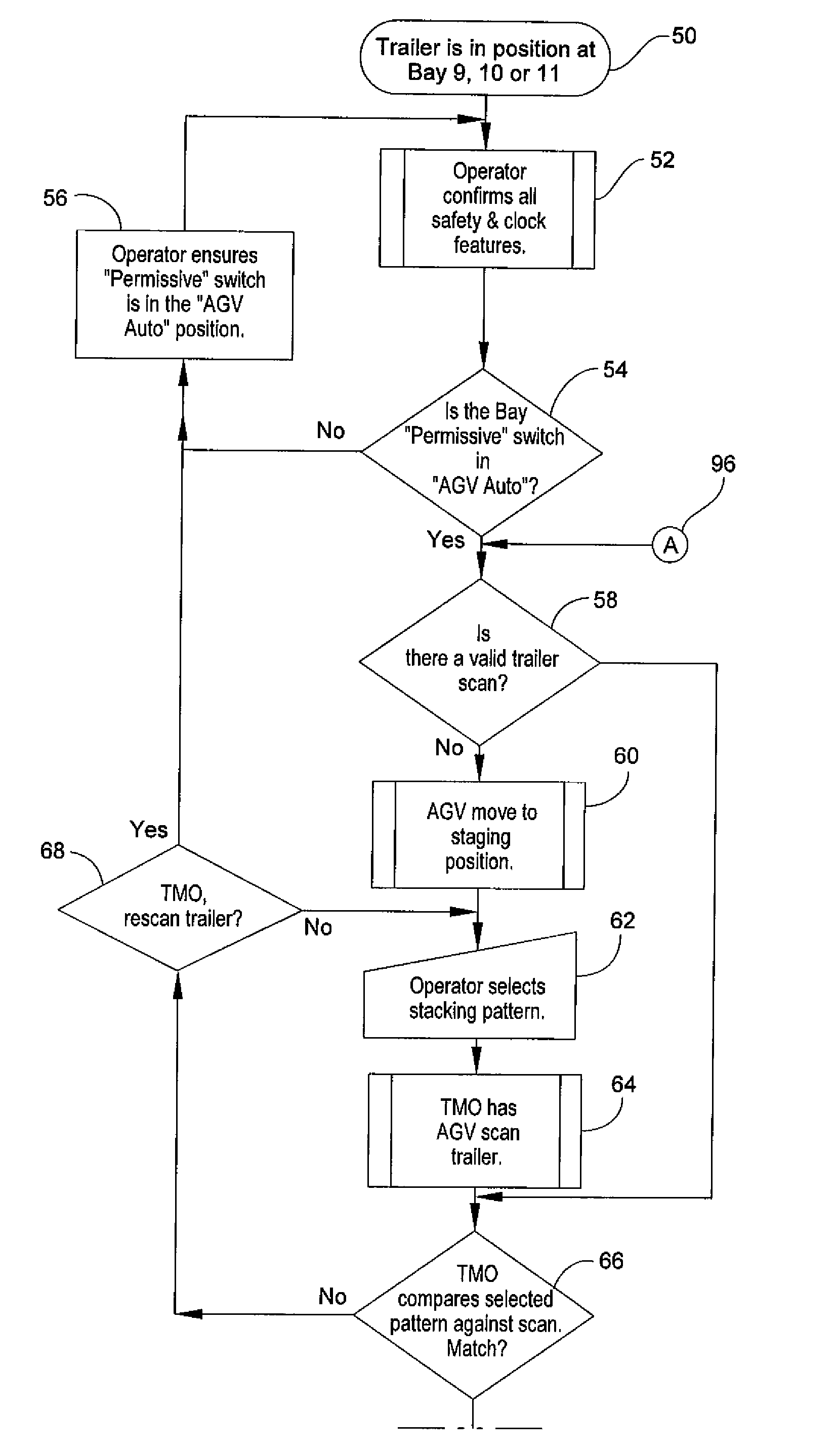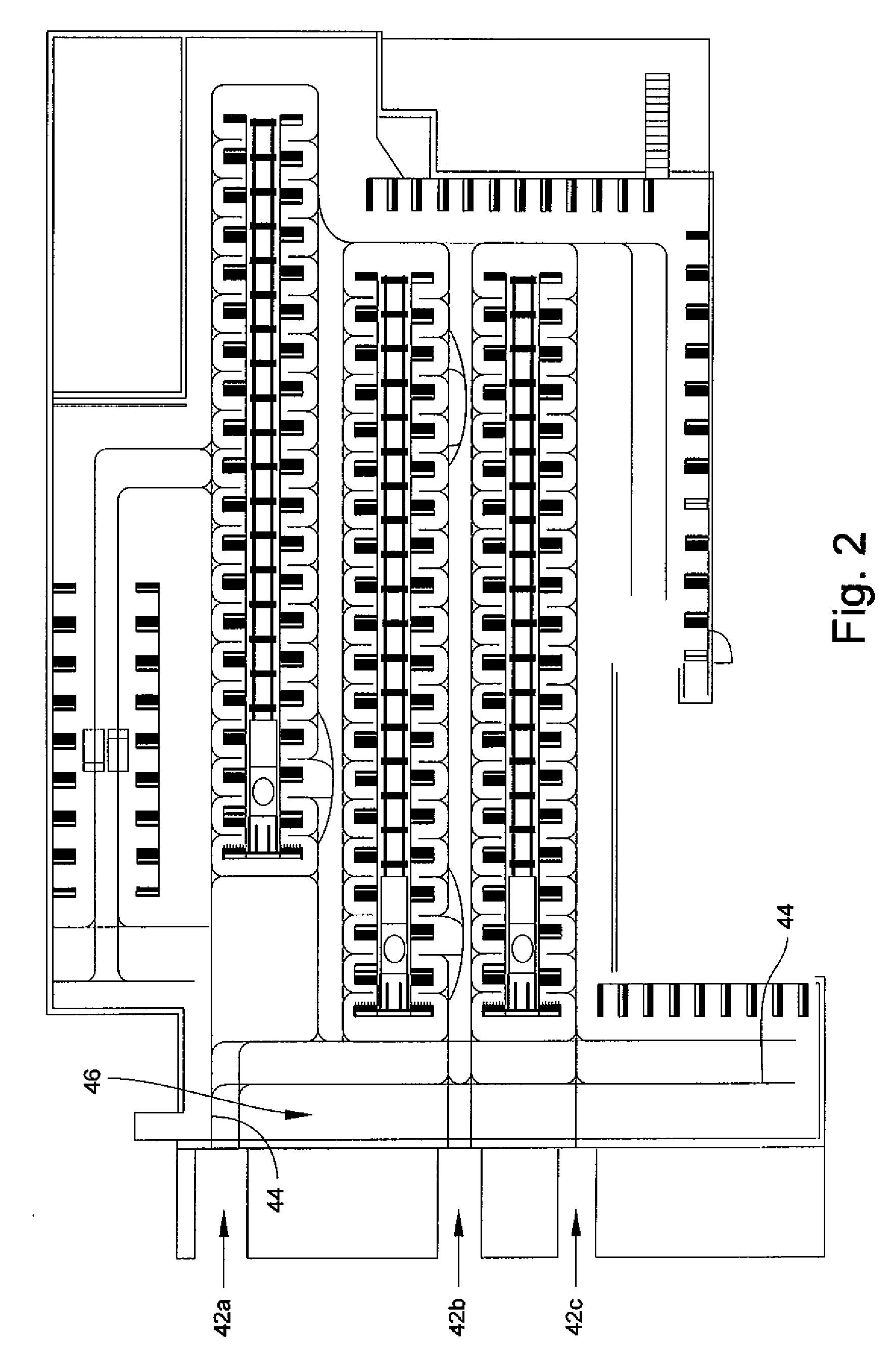Automated cargo loading systems and methods
- Summary
- Abstract
- Description
- Claims
- Application Information
AI Technical Summary
Benefits of technology
Problems solved by technology
Method used
Image
Examples
Embodiment Construction
[0016]Referring now to the drawings, systems and methods for generating loading instructions and automating cargo loading are described herein and are illustrated in FIGS. 1-3c. While the systems and methods are described with reference to a particular embodiment in which trailers are loaded at loading bays, the systems and methods may be applied to any cargo loading environment in which cargo is moved from a loading area to a transport. In the exemplary embodiments provided herein, the loading instructions are generated based upon a predetermined delivery route, however, the instructions may be generated based upon other parameters such as delivery priority, weight, and pallet size. As used herein, the term “cargo” generically describes any item loaded onto a trailer, and preferably refers to a packaged pallet.
[0017]Referring to FIG. 1, a system diagram illustrating communication between cargo loading modules of the system is shown. Pallets, pre-loaded with a customer-specific sele...
PUM
 Login to View More
Login to View More Abstract
Description
Claims
Application Information
 Login to View More
Login to View More - R&D
- Intellectual Property
- Life Sciences
- Materials
- Tech Scout
- Unparalleled Data Quality
- Higher Quality Content
- 60% Fewer Hallucinations
Browse by: Latest US Patents, China's latest patents, Technical Efficacy Thesaurus, Application Domain, Technology Topic, Popular Technical Reports.
© 2025 PatSnap. All rights reserved.Legal|Privacy policy|Modern Slavery Act Transparency Statement|Sitemap|About US| Contact US: help@patsnap.com



